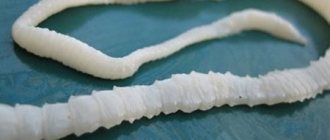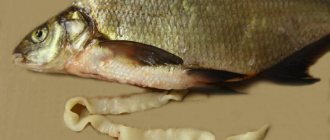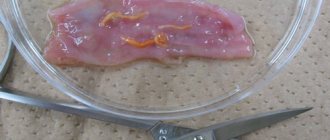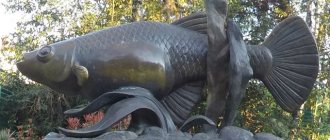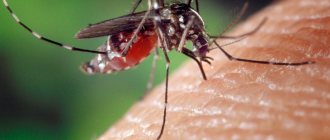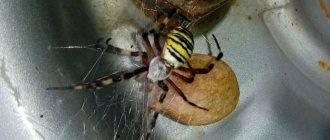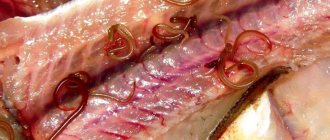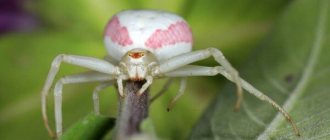Disputes about which fish have parasites and which do not are, in principle, meaningless. These organisms are found in both freshwater and marine life. Most of the entire catch is contaminated with helminth larvae, which are often so small that they cannot be seen with the naked eye.
But this is not a reason to refuse to eat such a valuable product as fish meat. Firstly, not all worms are dangerous to humans, and secondly, if dishes are prepared correctly, they die.
Are there parasites in marine fish?
Despite the widespread belief that fish caught from the depths of the sea, where temperatures are low, do not contain parasites, this is a mistake. There are indeed fewer of them than freshwater ones, but this does not make them any less dangerous to humans. For example, in the Pacific and Atlantic Oceans, fish are often infested with Nibelinia larvae, and the cod worm is common in all oceans.
Fish in the ocean
Parasites can be found in fish of any price category. Therefore, you cannot eat the product without prior freezing or heat treatment, carried out in compliance with all standards.
Worms dangerous to the human body
Among all of the above infection carriers, Diphyllobothrium latum and Diphyllobothrium dendrite should be distinguished. The favorite fish of these worms are perch, pike, burbot, as well as their derivatives: caviar, liver, etc.
Worms of the nematode group, the size of which does not exceed 5 mm, are also at risk. The symptoms of infection with these parasites are similar to all others: diarrhea (or, conversely, constipation), bloating, nausea, gastrointestinal dysfunction. If you find this kind of worms inside a fish, get rid of it, since no heat treatment will help in this case.
Can a person become infected with helminths from river fish?
Almost all freshwater fish in Russia are infected with parasites. Every year many cases of infestation of people are recorded. Most often, fishermen and their family members fall ill, and this is mainly due to improper processing of raw materials. For example, pike caviar not kept in brine for the required period can cause diphyllobothriasis, which is caused by tapeworms.
Frozen fish sold in stores, according to established technology, is subjected to very low temperatures, which are harmful to parasites. A household refrigerator is not helpful in this case. Therefore, it is best to boil or fry your own catch or a product purchased from private traders. You shouldn’t take risks and use it raw, lightly salted or dried. The parasites that live in river fish are tenacious and die only at a temperature of -18°C after 2 weeks.
Treatment methods
Treatment of fish parasites can only be prescribed by a specialist in this field, namely a parasitologist or infectious disease specialist. When choosing a treatment regimen, the doctor is guided by the type of parasite, its location, the severity of symptoms, the general condition of the patient and many other factors. All drugs used in treatment are very toxic, so self-administration of these medications is not permissible. The dosage and special diet for the duration of treatment are selected by the doctor.
Treatment of tapeworm should be carried out only in a hospital setting, with the patient taking the medicine in stages, with breaks between them. As a result of treatment, the parasite dies and is eliminated from the body, while the patient may experience intestinal obstruction, and surgical intervention may be required, especially if the parasite is of an impressive size or there are several of them.
Populin or Ecorsol are used to treat opisthorchiasis; treatment of this disease is complex and must be carried out under the supervision of a doctor. Clonorchiasis is treated with anti-inflammatory, antispasmodic, choleretic, antihistamine drugs and sorbents.
For metagonimiasis, Cesolom or Biltricid is prescribed; without timely treatment, the disease can affect the heart, spinal cord and brain. Anisakidosis is treated with Albendazole or Mebendazole.
Types of worms and risk of infection
All fish parasites are conventionally divided into two large groups: those that are safe for humans and those that cause serious harm to health.
The former cannot exist in the human body. Even once they get into it, the worms do not stay, leaving with waste products. Only occasionally, the toxins they produce can lead to an allergic reaction. These helminths include:
- Cystidicolafarionis.
- Schistocephamos.
- Trienophorus nodulosus.
The names of parasites transmitted through fish that are dangerous to humans are given below:
- Broad tapeworm causes diphyllobothriasis. In the fish carcass, the larvae look like small grains of rice. Once in the human body, they are fixed in the intestines and reach the adult stage in 2–4 weeks. They can grow up to several meters. The first symptoms of the disease appear when the parasite reaches the sexually mature stage of development. You feel constantly tired, your temperature rises, and your stomach begins to hurt. Most often, the intermediate hosts are pike, salmon, and perch.
- The Siberian fluke can cause opisthorchiasis. You can get infected from carp fish. In humans, the helminth parasitizes the gallbladder and liver. The incubation period is 2–3 weeks, after which the temperature begins to rise to 38–40 degrees, nausea and vomiting appear. There may be a bitter taste in the mouth and pain on the right side of the abdomen. The acute stage lasts about two months, after which, if left untreated, it becomes chronic.
Carp
- Ligulidae is a type of tapeworm. Sometimes fishermen observe unusual behavior of fish that cannot go under water. The reason for this is precisely this parasite, which disrupts the functioning of the swim bladder. Most often, bream, roach, and rudd are infected with the helminth. It does not linger in the human body, but can cause a severe allergic reaction.
- The Chinese fluke causes a disease called clonorchiasis. Transmitted through minnows, crucian carp, and carp. The invasion is accompanied by a feeling of weakness, loss of appetite, abdominal pain, and diarrhea. In severe cases of the disease, the temperature is high, the spleen and liver are enlarged, and severe pain appears on the right side of the abdomen.
- Anisakidosis is caused by nematodes of the anisakid family. This is a dangerous parasite that, when it enters a person, attaches itself to the mucous membrane of the gastrointestinal tract. The first symptoms may appear within a few hours after infection. There is severe pain in the larynx and stomach area, and the temperature rises.
LIGULOSIS
0
Many fishermen, when cleaning caught fish, found long (up to 120 cm) white flatworms (tapeworms) in its abdominal cavity. These are the causative agents of ligulosis or digrammosis of many freshwater fish - immature forms of tapeworms. Sexually mature individuals live in the intestines of fish-eating birds: gulls, grebes, cormorants, herons. These are their so-called final owners. In addition to them, two intermediate hosts participate in the development of Ligulidae - cyclops and fish, mainly carp (bream, silver bream, roach, rudd, roach). Getting into the intestines along with food, and then into the body cavity of the fish, the parasites grow, feed at the expense of the host, compress the internal organs, and cause disruption of their functions. Caught fish affected by Ligulidae, after removing them from the abdominal cavity, are quite suitable for food. However, the meat of diseased fish is somewhat different in biochemical composition from the meat of healthy fish; it is less nutritious and tasty.
How can you tell if your fish is infected with parasites?
Parasites in fish cannot always be seen with the naked eye. The size of the larvae of some species is very small. Only laboratory testing provides reliable information. Most often, helminths are found in pollock, flounder, perch, bream, crucian carp and ide. If worms are found in the carcass during cutting, then there is no need to cook from such a product. It is better to recycle raw materials.
Sometimes the presence of parasites in fish can be determined by external signs. Warning should be caused by dark spots or spike-like growths on the carcass, cloudy eyes, and grayish gills. Some helminths change the structure of tissue fibers. The fillet becomes loose and does not hold its shape.
Symptoms
Acute manifestations of helminthiasis are pronounced in spring or summer, most often in fish from 2 to 4 years old. In the early stages, it is almost impossible to identify the likelihood of infection. However, worm disease has specific signs that make it possible to detect infected fish:
- they try to stay as close to the shore and to the upper layers of water as possible - this makes it easier for them to breathe and easier to feed;
- swimming with a slight tilt on the side or raising the stomach up, severe weight loss;
- bloating and hardening of the abdomen;
- the eyes of fish infected with the parasite are cloudy, and the body is covered with small spines;
- react poorly to the appearance of people or boats; infected fish are easy to catch;
- if there are too many parasites, the abdominal wall ruptures and the worms fall into the water.
When cutting fish, it is not difficult to visually identify worms, since they are worms. Between themselves they have significant differences in structure, shape, and size. Small worms and their larvae are especially dangerous.
Should I give up fish because of the risk of infection with worms?
According to sanitary standards, fish with a moderate content of helminths in the body is considered suitable for consumption. It must first be frozen, the duration of which is 32 hours at a temperature of -28°C, and 7 hours at -40°C. During this time, all parasites, their larvae and eggs die. Raw materials become safe.
Fish is an essential product in human nutrition. Neither meat nor vegetables can fully replace the beneficial substances contained in it. Stores receive certified raw materials that are guaranteed to have undergone the necessary processing.
When buying fish from private fishermen, there is always a risk of purchasing a product with helminth eggs that parasitize it. But even in this case, a well-cooked or fried product can be safely eaten.
Fried fish
Basics of therapy
If you have eaten infected fish or you suspect that it contains worms, first of all, go to the doctor. He will prescribe the necessary tests, the results of which will confirm or refute the diagnosis.
Treatment of helminthiasis
The earlier the disease is detected, the more effective the treatment will be. Each type of parasite has its own medicine, which cannot be used against other helminths. Severe diseases are treated surgically, and some of them lead to death, despite qualified medical care.
If there were tapeworms or other parasites in the fish, therapy is carried out for all family members, since some worms are transmitted through one touch. In addition, there are diseases that occur without visible symptoms.
That is why it is necessary to have stool tested and undergo a course of treatment. To prevent re-infection, you must follow a diet and not violate the rules of hygiene.
Self-medication is strictly prohibited. Many anthelmintic drugs are toxic and can cause serious consequences if taken in the wrong dosage.
Folk remedies
Worms in fish are very dangerous for humans, and alternative medicine recipes can be used to combat them. But first you need to talk to your doctor.
One of the popular options is carrot juice, which has an anthelmintic effect. Garlic is often used to kill worms.
You can eat it or make cleansing enemas from the juice. But the most effective remedy is pumpkin seeds, recognized by official medicine.
They quickly kill parasites and ensure their removal from the body.
How to protect yourself?
To avoid the danger of infection with parasites, it is worth considering that any fish can contain them by default, so you should follow some rules when cooking. There are several ways to destroy worms:
- Cook the fish for at least 15 minutes after the water boils. If the pieces are large, then this time should be increased.
- Frying is no less effective at killing helminths. When the lid is closed, the processing temperature increases. It is enough to hold the fish in a hot frying pan for 10 minutes on each side.
- The fillet is baked at a temperature not lower than 200°C until fully cooked.
- When smoking, it is better to choose a hot method. To make the product safe, it is enough to process it for 2 hours.
- The fish is salted in a saturated solution for at least three weeks.
Disease Prevention
In order not to “catch” helminthiasis, you must follow all the rules for preparing fish, as well as strictly adhere to personal hygiene.
- Buy fish only in special stores.
- Check the catch for the presence of “bad” individuals.
- During the cooking process, use dishes and kitchen utensils used only for fish.
- Do not taste raw minced meat.
- Cook large fish by cutting into portions.
- Maintain temperature conditions.
- If possible, reduce the intake of dried, lightly salted or raw fish.
These tips will help protect yourself from helminthiasis.
